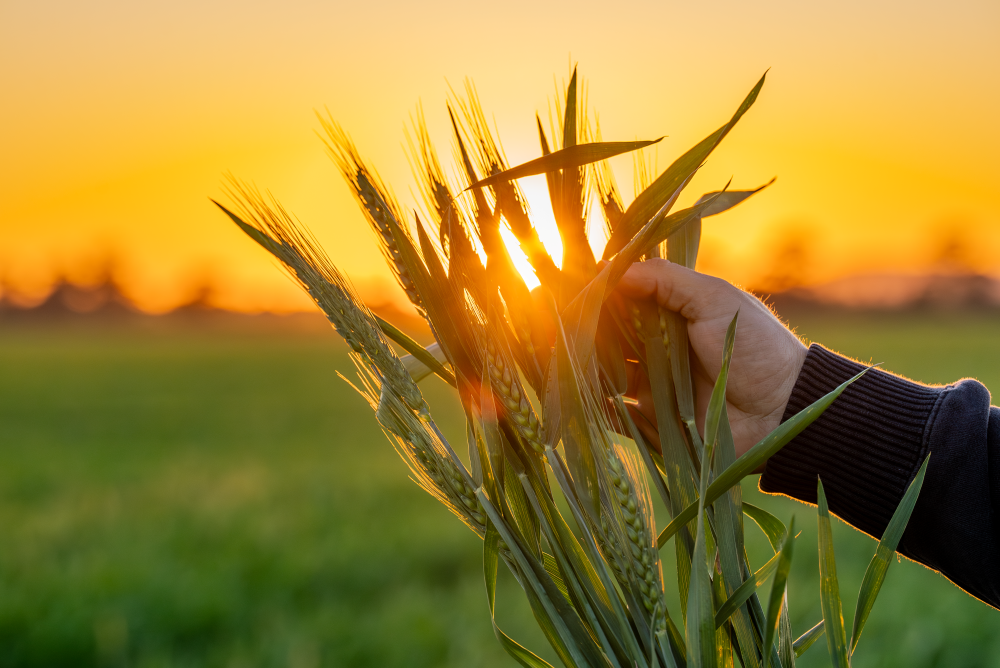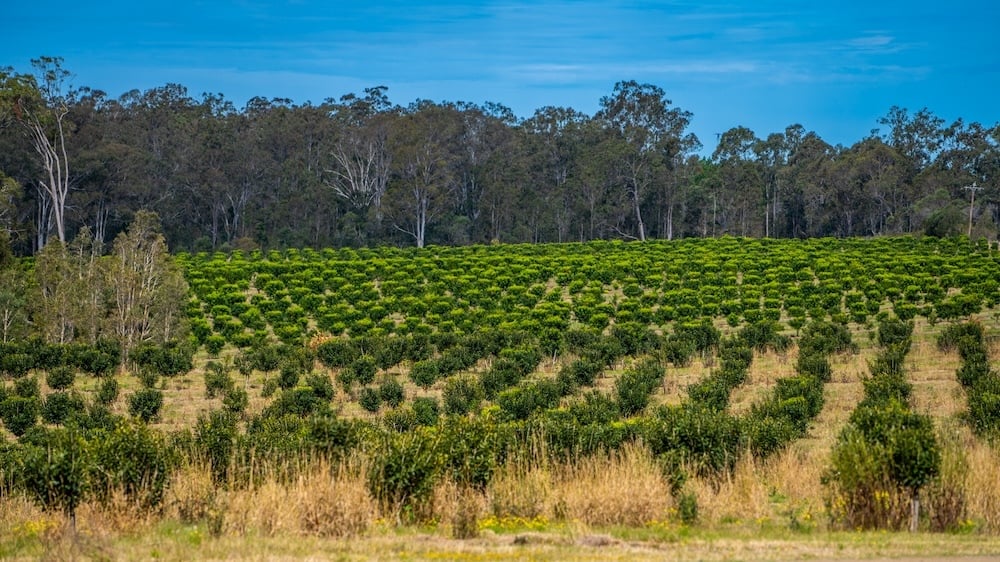Inside this year’s biggest farm sales
Australia’s biggest farm sales of 2025, as reported on by AuctionsPlus, delivered another year of blockbuster rural transactions, led by the roughly...
6 min read
 Kylie Dulhunty
:
Apr 3, 2025
Kylie Dulhunty
:
Apr 3, 2025

In this week's property round-up: The Mormon Church secures a key Duxton asset in a $38 million land deal, rural opportunities from deer farms to kayaking camps enter the market, a Barossa vineyard leased to a Penfolds producer has been listed, and AgForce urges landholders to act quickly on land valuation objections.
 Size: 6,020ha
Size: 6,020ha
Location: Wirrinya district
Sale price: About $4 million
The Church of Jesus Christ of Latter Day Saints has further expanded its Australian cropping footprint, picking up a significant slice of Duxton Farms’ portfolio in regional NSW.
In a statement to investors on the ASX, Duxton Farms confirmed it has agreed to sell the majority of its ‘Kentucky’ holding — a 6,020ha mixed cropping property in the Wirrinya district near Forbes — to Alkira Farms Inc., an agricultural subsidiary of the Mormon church, for $38 million.
The deal includes stock and domestic water rights totalling 48ML.
“The sale of Kentucky is a major milestone for Duxton Farms as the Board continues to execute on its strategy of reorienting the focus of the Company’s investment strategy away from dryland cropping and towards a diversified mix of new development opportunities in Australian agriculture to build significant value by elevating and stabilising the Company’s earnings profile in the long-term,” Duxton Farms Chairman Ed Peter said.
It’s the third Australian farmland acquisition by the US-based church in recent months, following its $68 million purchase of Calrossie Farm in northern NSW and the reported $300 million-plus buyout of the Worral Creek Aggregation in southern Queensland.
Duxton will retain 423ha and 1,463ML of general security irrigation water from the Kentucky property, while a 400ha portion known as Roselyn — now functionally part of Duxton’s West Plains operation — was never on the market.
Kentucky is a large-scale, highly productive cropping operation in NSW, known for its open, level land and soil types ideal for growing wheat, barley, canola and chickpeas.
It features quality infrastructure including extensive grain storage, machinery sheds, a weighbridge, and worker accommodation, along with 8km of Newell Highway frontage.
The property benefits from reliable rainfall, a favourable climate, and a well-planned internal road network suited to heavy machinery and transport.
When Duxton listed Kentucky in 2024 a sale price of more than $45 million was anticipated.

Size: Tara Drive (2.05ha) Barrington Lodge (2.2ha)
Location: Tara Drive (Acton Park) Barrington Lodge (Barrington)
Sale method: Tara Drive (offers over) Barrington Lodge (EOI closing April 16)
Price guide: Tara Drive ($1.7 million-plus) Barrington Lodge ($1.4 million-plus)
From working deer farms to wilderness lodges, rural property buyers are increasingly looking for something a little different—something that blends lifestyle, income and a connection to the land in new ways.
At Acton Park in Tasmania, 87 Tara Drive, which is priced at offers over $1.7 million, offers just that.
Set on 2.05ha, acres just 15 minutes from Hobart, the property combines coastal views, a high-end family home, and a licensed deer farm.

Owner Todd Tatnell has raised his two children there for the past eight years, showing them how they can live off the land.
The property features a veggie garden, paddocks, a dam, and space for everything from goats to macaws.
“You can be self-sufficient if you want to,” Mr Tatnell said.
“It’s a deer farm, a hobby deer farm, and I do sell the meat occasionally. But I just love the animals and we have a wide variety.”
Mr Tatnell said he had fully renovated the four-bedroom house, with other features including a stunning pool and a five-car garage with hoist.
“It’s your own sanctuary,” he said.
“It’s peaceful, quiet, and only 10 minutes from everything.”
The Agency’s Andrew Wells and Shenna Rawlings have the listing.
In NSW, a 2.2ha property is also offering a unique take on regional living. Barrington River Lodge at Barrington includes a mud-brick lodge, two cabins, and a riverside campground, with bookings for up to 54 guests.
The Agency property partner Amanda Robertson says the property has hosted everyone from the Olympic kayaking team to the Waratahs.
“They set up their time trials and spent the weekend there … it’s got great access to the river, beautiful swimming holes, and it’s only 12km from Gloucester,” she said.
The lodge is being sold via Expression of Interest, closing on April 16, with a price guide of $1.4 million-plus.
Ms Robertson said the property would suit a lifestyle buyer, a wellness retreat, or someone “looking for income without it being a huge onerous task”.

Size: 55.58ha
Location: Nuriootpa, SA
Sale method: Expressions of Interest, closing 4pm (ACST), May 1
Price guide: About $4 million
A Barossa Valley winery leased to one of the world’s largest wine companies has hit the market with price expectations of about $4 million.
Rural Funds Management has listed the Hahn Vineyard, which is leased to Treasury Wine Estates, which has a portfolio of major global brands including Penfolds, Wolf Blass, Lindeman’s, Pepperjack and more.
Treasury Wine Estates has a current lease until June 2026, with the medium-sized vineyard planted to Shiraz (41.52ha) and Cabernet Sauvignon (8.69ha).
Vines on the vineyard vary in age, with planting occurring between 1970 and 2017.
CBRE has been appointed to manage the sale, with agribusiness managing director John Harrison emphasising the property would suit buyers seeking a set-and-forget investment.
“The offering provides scale and is an exceptional opportunity to invest in well-established vineyards in a world-renowned wine region,” he said.
“The lease to Treasury Wine Estates, a global wine company that produces and markets over 70 wine brands, is expected to underpin buyer interest from buyers seeking a passive investment.”
The vineyard is located 87km northeast of Adelaide and 7km from Nuriootpa, with 55.58ha spread across four titles.
CBRE Agribusiness Director Angus Bills said a key feature of the vineyard was its water security with multiple sources through underground allocations as part of the Barossa Infrastructure Limited (BIL) scheme.
“There’s a total of 83.4ML available, with 24ML of peak and off-peak water via the BIL scheme,” he said.
“In addition, the property includes a 50ML storage dam located in the centre of the property.”
Improvements include three implement sheds, a pump shed, office and six Orchard Rite frost fans.
Expressions of Interest close at 4pm (ACST) on May 1.
AgForce has urged rural landowners across 14 Queensland council areas to urgently review their new land valuations or risk paying inflated rates and land rents.
The Queensland Valuer-General issued the updated valuations on March 27, with the new figures effective from June 30.
Primary production landholders in regions such as Murweh, Paroo and Quilpie have been hit with staggering increases of more than 250%.
Other significant jumps include Charters Towers (122%), Rockhampton (108%), and Townsville (72%).
AgForce Chief Executive Officer Michael Guerin said unimproved land values directly affect council rates and leasehold rent, and it’s vital any errors are corrected now.
“Unimproved values determine what council rates rural landholders pay and are also used to calculate leasehold rents, so it’s important the figures are right,” Mr Guerin said.
Landholders have until May 26 to lodge an objection with the Valuer-General.
AgForce’s in-house valuer John Moore said it was up to landowners to check the figures and take action.
“Unimproved values are done by mass appraisal, meaning your property isn’t individually valued so errors can occur,” Mr Moore said.
“It’s important you object to your new valuation if you believe the unimproved value is too high, because it could result in large savings in rates or rent.”
To object, landowners need to submit supporting evidence online or via the address listed on their valuation notice.
Those without internet access can request an objection kit by calling 1300 664 217.
Broadacre farmland prices have continued to plateau for a second consecutive year following a decade of strong growth, according to new data.
The latest ABARES Farmland Price Indicator has revealed the average price per hectare of national broadacre farmland levelled off in 2024, just as it did in 2023.
The price per hectare for broadacre farmland climbed slightly from $9429 in 2023 to $9617 in 2024. But that growth remains a long way off the heady heights of 2022, when the price soared $1889/ha.
The indicator revealed the price of cropping farmland fell from $8634/ha in 2023 to $8309/ha in 2024, but beef farmland climbed slightly from $9185/ha to $9401/ha.
The price of dairy farmland suffered a hefty loss, falling from $39,350/ha in 2023 to $24,822/ha in 2024. Sugarcane farmland dropped slightly from $21,634/ha to $20,904ha, while orchard farmland increased to $39,560/ha, up from $35,704/ha.
Vineyard farmland remained relatively stable at $41,551/ha in 2024, compared to $41,152/ha in 2023.
ABARES Executive Director, Dr Jared Greenville, said farmland prices could be a double-edged sword.
“On one hand, higher land prices boost farmer wealth and equity levels,” he said.
“This in turn increases lending capacity and supports productivity growth by allowing farmers to access capital for further investments in land and technology.”
On the other hand, Dr Greenville said relatively high land prices could create a barrier to entry and expansion.
“We have seen strong annual growth in the Tasmanian dairy farmland (14.1%), as well as national cropping farmland (13.7%) and beef farmland in the southern region of Australia (13.8%),” he said.
“Average annual price growth over the past 10 years has been lowest for hobby farmland (4.1%) and sugarcane farmland (6.2%).”
Kylie Dulhunty is a journalist with more than 20 years experience covering everything from court to health. Today, Kylie loves nothing more than turning market trends, industry insights and epic property sales - residential, rural and commercial into captivating stories.
Posts By Tag
.png)
Australia’s biggest farm sales of 2025, as reported on by AuctionsPlus, delivered another year of blockbuster rural transactions, led by the roughly...

Each week, we take the pulse of rural property - from sales data to who’s making headlines. Check out this week's report from Kylie Dulhunty.

Each week, we take the pulse of rural property - from sales data to who’s making headlines. Check out this week's report from Kylie Dulhunty.